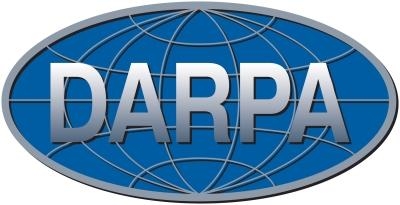Sun, May 10, 2015
Designed Micro Air Vehicle Capable Of Chemical Detection
The U.S. Air Force Academy won the Defense Advanced Research Projects Agency's Innovation Challenge for the second year in a row, Academy officials said May 6.

Lt. Col. Tim Jung, an Academy aeronautical engineering professor, led a team of 10 cadets who won the challenge with their design of a micro air vehicle that can sniff out chemical concentration levels in an explosive cloud.
"There are countries that have stockpiles of chemical weapons," said Dr. Jim Solti, the Academy's chief scientist. "We can't target those stockpiles because we can't say for sure it won't release a poisonous cloud that will drift and harm U.S. forces or civilians."
The research team has started to solve this problem by creating a micro air vehicle and delivery system that is deployed from a canister. The canister releases hundreds of sensors in waves so a significant portion of the poisonous cloud is covered.
"That's really what's innovative," Jung said. "If we know exactly where the cloud is, we can deploy them quickly. If we don't have very precise information, we can deploy (the micro air vehicles) slowly."
It's the second year Academy cadets have worked to find the right solution to measuring chemicals after explosions, a problem the Defense Department has tackled for years.
"Currently, we fly a single drone inside and it measures very little," Solti said. "It could miss all the chemicals completely. It's like taking a soda straw-size sampling of a football field and saying you know the exact makeup of the football field, based on that single sample."
Known as the Sensing Unguided Recon Gliders (SURG), the team competed against two other Academy teams and teams from the U.S. Military Academy and the U.S Naval Academy.

DARPA officials designed the Innovation Competition to challenge cadets and midshipmen at the military academies to solve perplexing problems with innovative solutions.
"We were surprised when we won," Jung said. "There were teams that had some really excellent engineering. Our solution met the criteria. It was beneficial to the warfighter and innovative. I had a great team of cadets this year -- the right mix of fun and really hard work. They fully embraced this project."
Next year, Jung plans to have cadets design parachutes for the gliders so gusts of wind can't blow them off course.
"They're unguided," he said. "So wind can blow them out of the cloud and they can hit each other. We want them to be inside the cloud, sampling the air. I'm thinking some sort of parachute could help them glide more smoothly."
Last year, Lt. Col. A.J. Rolling, an Academy assistant professor of aeronautics, and his cadet team won for the challenge a patented engine-and-wing design for aircraft that could save millions in fuel costs by redirecting excess air into the engine, increasing thrust while also reducing drag.
The cadet researchers are Cadets 1st Class Alex Carlson, Bobby Larson, Dan Putney, Andrew Miller, Ryan Lynch, Richard States, Ian Day, Josh Castagnetta, Dylan Juedeman and Aaron Macy.
More News
Airport Marking Aids Markings used on runway and taxiway surfaces to identify a specific runway, a runway threshold, a centerline, a hold line, etc. A runway should be marked in ac>[...]
"It is extremely difficult, if not impossible, for manned aircraft to see a drone while conducting crop-enhancing and other aerial applications at low altitudes and high speeds. We>[...]
Aero Linx: The Skyhawk Association The Skyhawk Association is a non-profit organization founded by former Skyhawk Pilots which is open to anyone with an affinity for the A-4 Skyhaw>[...]
“The T-54A benefits from an active Beechcraft King Air assembly line in Wichita, Kansas, where all required METS avionics and interior modifications are installed on the line>[...]
Aero Linx: Aerostar Owners Association The Association offers the Aerostar Owner a unique opportunity to tap an invaluable source of information concerning the care and feeding of >[...]
 ANN's Daily Aero-Term (04.28.24): Airport Marking Aids
ANN's Daily Aero-Term (04.28.24): Airport Marking Aids Aero-News: Quote of the Day (04.28.24)
Aero-News: Quote of the Day (04.28.24) ANN's Daily Aero-Linx (04.28.24)
ANN's Daily Aero-Linx (04.28.24) Aero-News: Quote of the Day (04.29.24)
Aero-News: Quote of the Day (04.29.24) ANN's Daily Aero-Linx (04.29.24)
ANN's Daily Aero-Linx (04.29.24)




